-
EngineTurbo 1.8L I4
-
Power170 HP / 200 LB-FT
-
Transmission5-Speed Manual
-
DrivetrainFront-Wheel Drive
-
Curb Weight2,693 LBS
-
Seating2+3
-
Cargo22.8 CU-FT
-
MPG26 City / 37 HWY
-
Base Price$20,095
-
As Tested Price$21,815
Volkswagen did eventually start to play on the shared nomenclature of the car's name and the sport when the product hit the global market (note the dimpled shift knob). But, this little anecdote exemplifies something that has always been true about the small hatchback: There's more to it than meets the eye.
The 2015 Volkswagen Golf, now in its seventh generation and its fortieth year, continues its tradition of being a delightful small car full of surprises. It looks a bit quirky and aloof, but it boasts sporty handling and a refined comportment. It comes with a European badge, but it costs about the same as its domestic equivalents. It appears quite small, but comes with a spacious interior and big cargo area.
For this new generation, the Golf has undergone some updates to its design, drivetrain, handling and interior, maturing in a way that should make it more tantalizing for the American market – Volkswagen's long-time white whale – but it still retains these enjoyable qualities that have made it into a worldwide success. We recently took the Golf for a spin around the Bay Area to experience all the updates for ourselves.
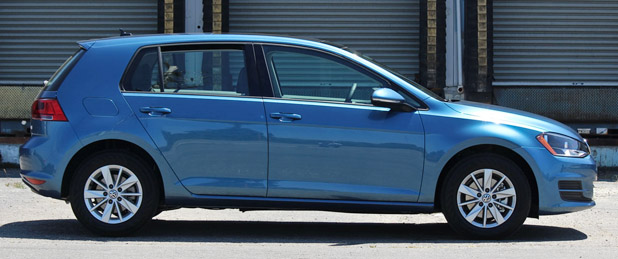
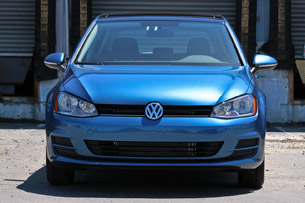
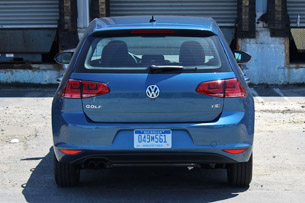
The Golf (including the TSI, GTI and TDI family) is the first American-market vehicle for Volkswagen that uses its MQB ("Modularer Querbaukasten" or "Modular Transverse Matrix") platform. The MQB represents a return to a simpler form of mass production for the automaker, employing a uniform position for the motor and transmission, as well as a standardized, interchangeable set of parts. Using this platform will allow Volkswagen to produce multiple models at a single plant and, according to the automaker, should reduce the time taken to build a vehicle by as much as 30 percent.Overall, the new Golf looks much more mature than the previous generation.
For 2015, the Golf finally employs the kind of exterior styling we've been seeing on other models in Volkswagen's line since 2010. Like the Jetta and Passat, the Golf has a completely new front fascia, with noticeably sharper headlight clusters, available LED running lights and a more compact grille. Other tweaks to the hatch's looks include a more steeply sloped hood, a conspicuous character line running down the side to the taillights, and front wheels that sit 1.7 inches further forward, which lend the car a subtle "cab backward" look.
The car has also grown in every direction except up. Length has increased by 2.1 inches and width has grown by 0.5 inches. Height, however, has been lowered 1.1 inches. The new dimensions give the Golf a sportier stance and the appearance of having a low center of gravity. Overall, the look is much more mature than the previous generation. Volkswagen hasn't changed enough to make the car unrecognizable, opting to maintain the overall shape and certain design elements like the C-pillar and roofline, which frame familiar Golf side windows. But the look is unmistakably subdued – surely the result of an effort to appeal to a broader range of buyers. It's a good-looking car, but arguably not as striking as a design like the Mazda3, one of its main competitors.
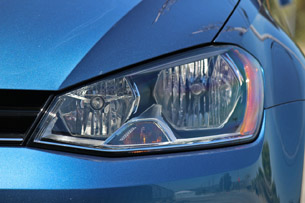
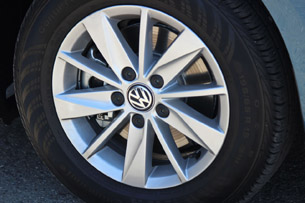
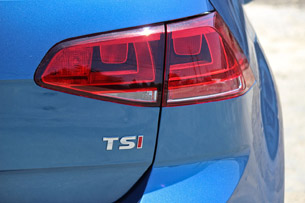
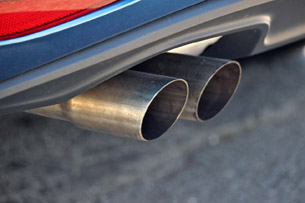
Inside, space has increased all around; total interior space is 93.5 cubic feet. That includes increases in shoulder room of 1.2 inches in the front and 1.1 inches in the back, as well as increases in elbowroom of 0.9 and 0.8 inches respectively. Cargo capacity has improved, as well, to 16.5 cubic feet up to the parcel shelf and 22.8 cu-ft to the roof. With the rear seats folded, the Golf now has 52.7 cu-ft of cargo capacity, 15 percent larger than before. Comparatively, that's bigger than the aforementioned Mazda3 hatchback in both respects (20.2 cu-ft and 47.1 cu-ft with the seats down). It's smaller than the Ford Focus with the seats up (23.8 cu-ft), but much more spacious when the seats are down (the Focus is rated at just 44.8 cu-ft).The cabin has a noticeably more premium feel, keeping in mind that the last Golf already boasted one of the better interiors in its class.
The new Golf's cabin has a noticeably more premium feel than before, keeping in mind that the MkVI car already boasted one of the better interiors in its class. Hard plastics are a given in this segment, and they're present in the Golf, but they've been minimized in favor of more soft-touch materials and paint, as well as trim pieces that can come in chrome, aluminum, and piano-black finishes. The center stack is angled towards the driver – a trait usually reserved for more performance-oriented vehicles. Controls and knobs have been repositioned to improve ergonomics, too.
The new infotainment system, which includes a 5.8-inch touchscreen, functions as advertised. We were impressed with the inclusion of a capacitive-touch sensor, which allows for the swiping and pinch-zooming motions recognized by modern smartphones, but the graphics and overall aesthetic feel dated and less premium than the rest of the cabin. VW's excellent Fender-branded audio system is an available option – one that audiophiles will surely appreciate.
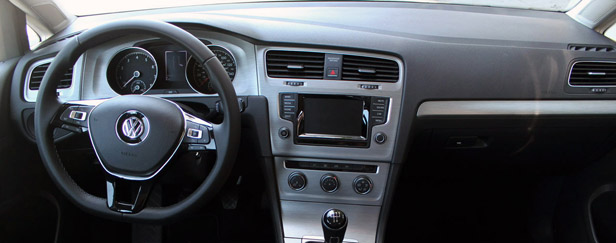
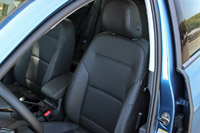
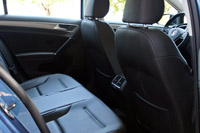
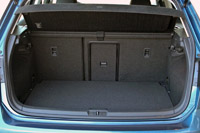
Additional standard cabin features on the Golf include power windows, door locks and exterior mirrors, along with air conditioning and Bluetooth connectivity. If opting for higher trim levels, drivers are treated to leatherette seating surfaces, cruise control, VW Car-Net connected services, as well as a leather-wrapped handbrake, shift knob and multifunction steering wheel.Safety should be a big selling point for the Golf.
All the pieces of the Golf's new interior amount to a cabin that virtually eliminates driver fatigue. The seats offer enough support and cushion to make long distance trips comfortable, the ergonomics make controlling the infotainment and HVAC a breeze, and the sound dampening mutes road and wind noise to near-luxury levels. If you're prone to taking road trips over other forms of transportation, the cabin alone makes this car a great option for you.
Safety should be a big selling point for the Golf. In fact, the car was just recently designated as a Top Safety Pick+ by the Insurance Institute For Highway Safety. Standard features include six airbags and automatic post-collision braking. On higher trim levels, safety systems like forward collision warning and park distance control are available.
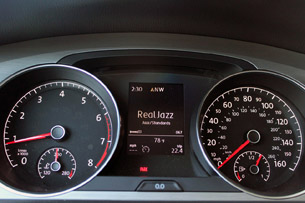
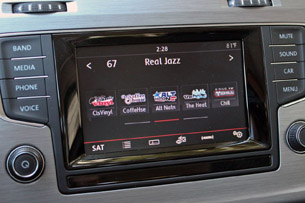
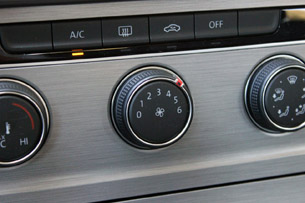
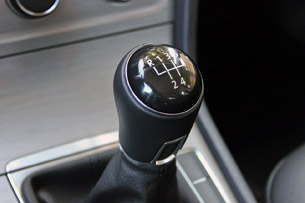
When people think of small, mass-market cars, engaging driving dynamics aren't generally the first thing that come to mind. That's too bad. There are a number of vehicles in this class that buck that dogma with sharp handling, balance and peppy engines. The Golf is certainly one of these – and has been so for quite some time now – providing drivers with a truly fun experience behind the wheel, even thought its power numbers aren't really anything to write home about.The low-range torque plateau can carry you smartly from gear to gear.
The Golf TSI employs Volkswagen's 1.8-liter turbocharged four-cylinder (replacing the low-revving 2.5-liter five-cylinder found on the previous generation) and the new engine offers a lot of improvements. It weighs just 290 pounds, a feat achieved through the use of super thin casting, a reduction from eight to four crankshaft counterweights, the use of smaller diameter main bearings and numerous other small weight-saving tweaks.
Its smaller size doesn't come at the expense of performance, however. The new engine produces 170 horsepower at 4,500 rpm, the same output as the 2.5-liter, and torque has been increased to 200 pound-feet (up from 177 lb-ft with the 2.5). All that torque is available much lower in the power band, starting at 1,600 rpm – a whopping 2,650 rpm lower than the previous engine. The upgraded engine also delivers better fuel economy – the Golf now achieves 26 miles per gallon city and 37 mpg highway – and offers better acceleration off the line. Weirdly, it's still pretty entertaining to drive the car economically, shifting at a lower rpm, since the low-range torque plateau can carry you smartly from gear to gear.
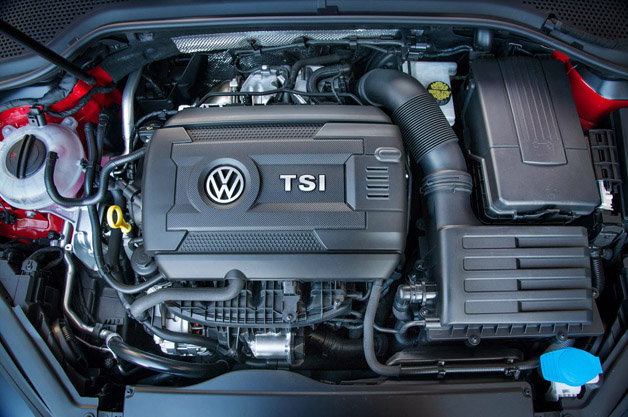
The engine is noticeably peppy off the line, with a responsive throttle that requires just a few degrees of input to get the car moving. Turbo lag and torque steer are both basically unnoticeable, treating drivers to a relatively smooth trip when getting up to speed. But the engine struggles a bit to accelerate the car at mid-range speeds. Going from 40 to 60 mph can feel like a crawl without downshifting, as power isn't nearly as plentiful after fourth gear. Unfortunately, the four's exhaust note doesn't sound as good as the outgoing 2.5-liter, coming with a much tamer growl that is augmented by the unmistakable high-pitched whine of a turbocharger.The ancient five-speed manual could use some improvement.
The new powerplant is mated to either a five-speed manual or a six-speed automatic transmission. The ancient manual gearbox could use some improvement, and not just by adding a sixth gear. The shifter contains noticeable physical resistance, making the throws a bit more laborious than expected, and clutch pedal travel length is too long. The six-speed automatic – an $1,100 option on S trim and standard on SE and SEL models – is solid, offering crisp shifts with minimal drama.
With its new chassis and 79-pound reduction in weight, drivers can have a darn good time pushing the Golf on twisty roads. The chassis has ten percent more torsional rigidity and the car comes with an all-new strut-type front suspension in the front and a multilink arrangement with coil springs, telescopic dampers and an anti-roll bar in the back. As a result of the mechanical updates, body roll is minimal and the car remains balanced and firmly planted to the pavement when tackling both sharp corners and long, gradual bends. The brakes have a nice sharp bite to them and the electronically assisted steering is blissfully responsive, eschewing the numbness found on less enthusiast-minded cars in this class. Further enhancing the Golf's drivability is the inclusion of Volkswagen's XDS brake-based cross-differential system – a feature found previously only on the GTI. XDS improves the car's stability and really allows you to confidently push it through corners at speed if you're feeling cheeky, though admittedly not as well as a true mechanical differential might.
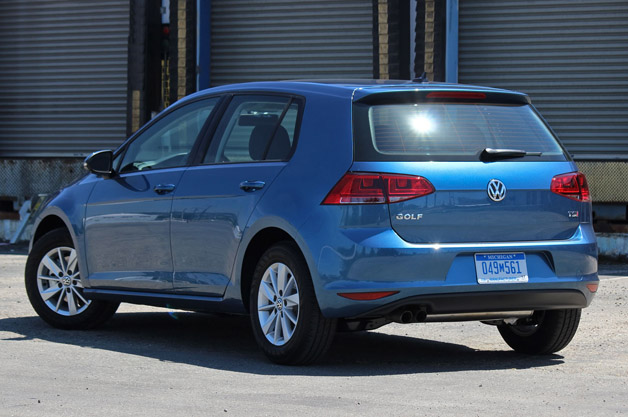
All in all, driving the Golf is patently more fun than driving the majority of its competition. It's not a terribly fast car, but its nimbleness and balance around turns is sure to brighten up any commute or coffee run. We were behind the wheel of the Hyundai Elantra GT the day before and the day after we drove the Golf, and while the GT is a solid car in its own right, it was glaringly obvious how much less engaging it is to drive. The primary vehicle that really gives the Golf a run for its money as a drivers car is the Mazda3, which comes with a better transmission and equally impressive handling dynamics.VW's little hatchback is undeniably towards the front of the pack in the small car segment.
The 2015 Volkswagen Golf is available as a three-door or a five-door hatch here in the States, and starts at $17,995 (plus $820 destination) for the Launch Edition. This limited-edition early model is pretty bare bones, coming only in a three-door configuration with the five-speed manual. After that, the three-door Golf S comes in at $19,815 (including destination), the five-door SE starts at $25,315 and the top-of-the-line SEL sets buyers back $27,815. The Golf is a bit more expensive than some of its competition – the Ford Focus hatchback starts at $19,115 and the Mazda3 hatchback comes in at $18,495, for instance – but it's not so egregiously pricey that its MSRP should be a deterrent.
Volkswagen needs the Golf to be a big seller. Sales have drastically slowed in the US for the German automaker, a development that has surely soured the mood in Wolfsburg just a few short years after the automaker laid out super ambitious sales goals for the American market. By all accounts, the Golf should be a success, as the little hatchback is undeniably towards the front of the pack in the small car segment. But American car buyers are a fickle and complicated group, and its solid performance in the hands of car reviewers like us doesn't necessarily translate into what matters most: sales.
Perhaps the Golf will surprise us one more time.
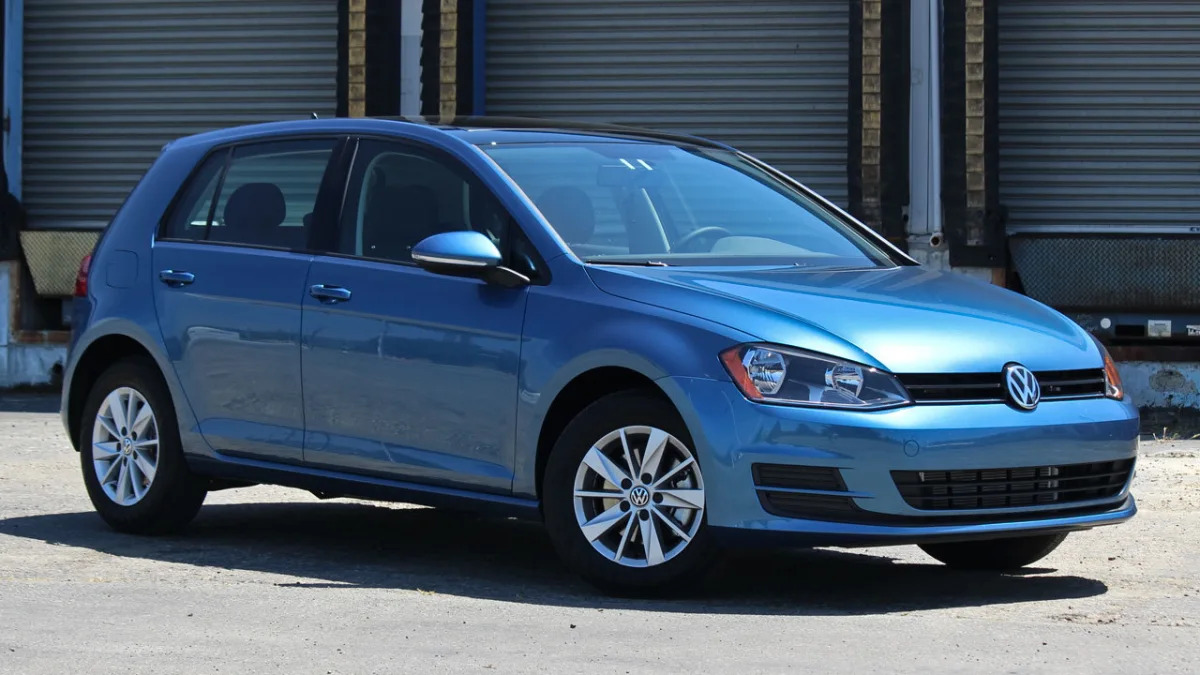









Sign in to post
Please sign in to leave a comment.
Continue